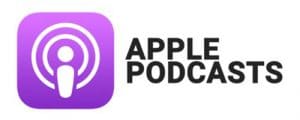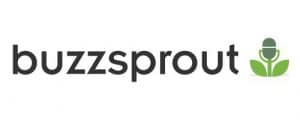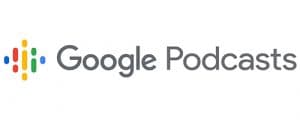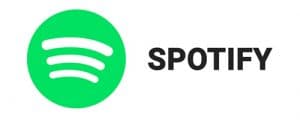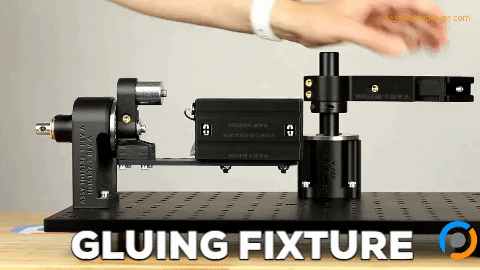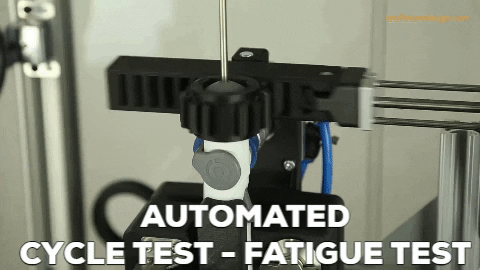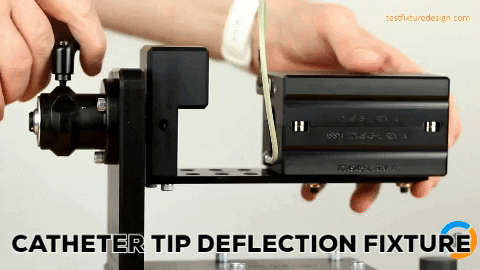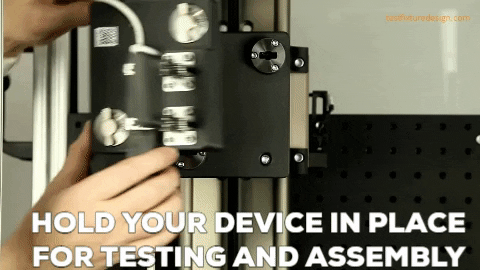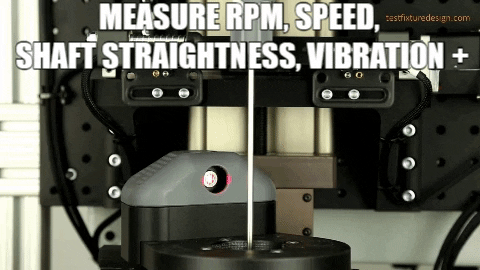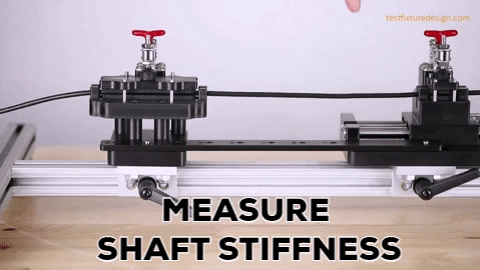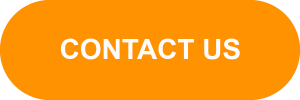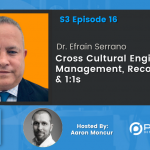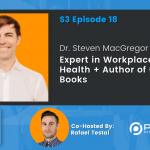Barbara Wood | Is #OpenToWork Useful for Mechanical Engineers on LinkedIn?
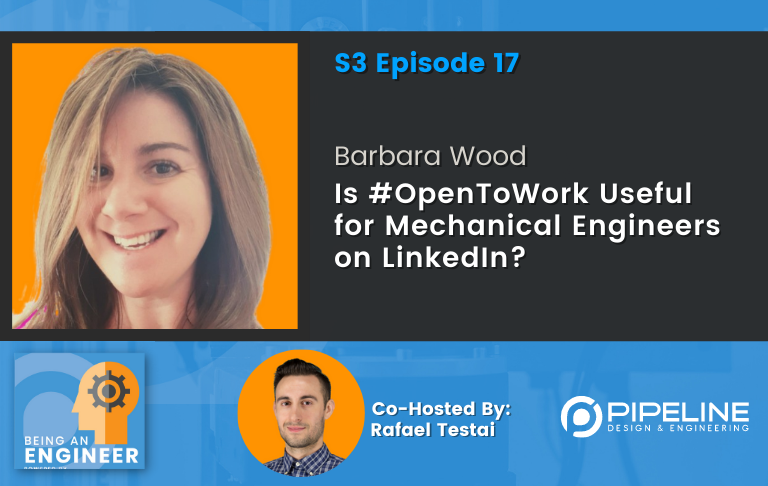
Who is Barbara Wood?
Barbara Wood is a mechanical engineer and product manager, PMP certified, (project management professional) with heavy CAD mechanical design skills and passionate about creating innovative design solutions. With a background in manufacturing and automotive/on-highway vehicle design. Barbara wears many different hats, her portfolio on LinkedIn consists of sheet metal design, fire truck design, plumbing, BIW (Body in White), CIW (Cab in White), hydraulics, full chassis design, plastic design, train gangway development, medical bed design, and much more.
You don’t want to miss this episode because we cover a lot like how to use #OpenToWork on LinkedIn while searching for a job as a mechanical engineer, and how Barbara went viral on LinkedIn while sharing her job-search journey. We also discuss top-down modeling, designing fire trucks on SolidWorks, as well as PMP certification and journaling for mechanical engineers.
Barbara’s mechanical design portfolio
Barbara’s viral Linkedin post
#OpenToWork
EXPAND TO VIEW EPISODE TRANSCRIPTION
SUMMARY KEYWORDS
linkedin, engineering, design, solidworks, journal, mechanical engineer, barbara, company, write, fire truck, job, podcast, engineer, part, automotive, find, reference, recruiters, instance, assembly
SPEAKERS
Presenter, Barbara Wood, Aaron Moncur, Rafael Testai
Presenter 00:00
Hi, everyone, we’ve set up this being an engineer podcast as an industry knowledge repository, if you will, we hope it’ll be a tool where engineers can learn about and connect with other companies, technologies, people, resources and opportunities. So make some connections and enjoy the show.
Barbara Wood 00:19
It’s a hard world out there. And you see so many people getting jobs. And you hear about so many that say that it is a job seekers market and there are jobs out there for everyone, and everyone gets jobs. But as an actual job seeker, I find that the communication is sparse. People ghost you, feelings are hurt. And it’s very tough to find that balance.
Rafael Testai 01:04
Hello, everyone, welcome to the being an engineer podcast. We are co host, Rafael Testai. Today we have another very special guest, Barbara wood. She’s a mechanical engineer and Product Manager PMP certified and that’s Project Management Professional with heavy CAD mechanical design skills. What a combination, right. She’s passionate about creating innovative design solutions. Her background is in manufacturing in automotive automotive on highway vehicle design. She loves automotive environments. Barbara has a portfolio LinkedIn containing sheet metal design, fire truck design, plumbing, B IW. And that’s body in white, which is the exterior of vehicles CIW. Kevin in white, which is the interior vehicles, and she’ll correct me in a second if I said this wrong, hydraulics for chasis. Design, plastic design, train to hire, train, train gangway development, medical bed design and much more. Barbara, welcome to the show. And please correct me if I said that right in your introduction.
Barbara Wood 02:12
Hey, thank you, Raf, you did pretty good.
Rafael Testai 02:14
Thank you. Well, these are two terms I asked you about before we even got started with the interview. BIW and CIW. Could you tell us a little bit more what those terms mean? Industry and just a little background on that?
Barbara Wood 02:30
Sure. So in automotive CIW would be cab in white, which means the development of a cab, the exterior shell before it is painted. So in its raw state of just sheet metal and plastic. And the same goes for body and white. So be the exterior of the body of the car or the truck or in my case fire truck. That is pre paint.
Rafael Testai 02:55
Understood Perfect. Well, you have a combination that I haven’t seen before here. Were project management and and CAD, how did you go about getting your PMP certification? And why did you get it?
Barbara Wood 03:09
That was recent, that was probably in 2020, so a year ago, and that was on my own my own initiative. I love learning. I love growing. And I saw that PNP was starting to be a newer trend. So I was ever looking for how can I go next in my career, hence someone after the PMP.
Rafael Testai 03:30
I understand. I want to give a little bit of background to the listeners. The way I heard about Barbara is because she’s very active on LinkedIn and her link to her LinkedIn will be in the description in the show notes. And right now I wanted to I’m very glad that she that she’s open to discussing this on the podcast, because a lot of you out there listening to this are in the same situation. She right now, right now has the little icon that says open to work on LinkedIn. And I was wondering, Barbara, if you could tell us a little bit more about the experience of looking for a position on LinkedIn by using some of the tools that LinkedIn LinkedIn has available?
Barbara Wood 04:06
Sure, I’ve actually done a study and you can find that on my LinkedIn profile as well. Or since I am in the job market, I thought that I would try to use LinkedIn to the fullest. And I thought that meant that if I applied to a job via the LinkedIn link, that I’d be able to follow the application process and see it within LinkedIn. And I had the false reasoning that if I was looked at for a job, or my job account application was viewed via the LinkedIn link that people would be looking at my profile. That reasoning was false. So I had a trend where I had applied for 20 jobs and not one of those resulted in anybody from that company or recruiting facility looking at my LinkedIn profile, and I was very good fused about it. So I put that study out there. And I got massive response for many recruiters saying they have everything that they need, they don’t need to go back and look at my profile. And when you apply through LinkedIn, they get a copy, essentially, have your LinkedIn profile already sent to them, so they don’t have to log in separately and look at your profile. So that was more encouraging. Once I put the study out there and got the feedback that I did, that the movement is there just can’t see it on LinkedIn, like I expected the tool to be used.
Rafael Testai 05:38
Well, thanks for sharing those insights with me and the listeners. So we sent a massive feedback to you quantify that. So we got an idea.
Barbara Wood 05:45
It had over 100,000 views, and over 100 comments,
Rafael Testai 05:50
100,000 views, ladies and gentlemen. Okay. How How did this even happen? What did you do differently from the other posts for this to gain so much traction?
Barbara Wood 06:01
Yeah, I wish I could quantify that because I keep doing. I think that I had a few heavy hitters that were recruiters that had a massive network. And they like to discuss things and grow individually themselves, which is what I was trying to do. I was trying to learn LinkedIn as a job seeker to make the tool work for me. I don’t believe in me working for the tool, I want the tool to be utilized and work for me. So with that insight, I just hit some heavy hitters in the recruiting committee. community that were able to provide insight, and then it expanded from there.
Rafael Testai 06:42
And how did you get those heavy hitters to comment that even see the post,
Barbara Wood 06:46
I initially posted it. And then I reached out to one recruiter because I was desperate. I still am desperate as a job secret seeker and asked her for her opinion through a private message on LinkedIn. And she replied on the post itself, which was very insightful. And I think it just blew up from there.
Rafael Testai 07:10
I understand. Well, thank you for your honesty, that about the desperation. I mean, there’s no shame in that, like we all need to make a living and make things happen. And talk to us a little bit about your portfolio, what can we expect to see once we click on it?
Barbara Wood 07:24
What I love about it, it’s so vast, I love change. I love working for companies that design many things and keep it interesting for myself. So in the portfolio, you’ll you’ll see that it reflects that you’ll see that I have a passion for automotive, because I designed fire trucks for over 17 years with three companies. And from there I freelanced to consulted myself because I wanted more of a work life balance. And in that I was given the opportunity to design medical beds work for plastic vacuum former learned all kinds of different manufacturing techniques, worked for safety rat company, did piece parts helps people with product development. So in the portfolio, just see a vast knowledge.
Rafael Testai 08:14
Okay, that’s not something you run across every day, someone that designs fire trucks. How did you get into that?
Barbara Wood 08:23
I was very fortunate to live in a small town who happened to have a fire truck manufacturing facility. And they did something really nice. And they took advantage of young talent, because then they can groom them and develop them into somebody that is a go getter for the company. So I was in a engineering magnet school already. I knew that engineering was the path that I wanted to be in in high school, and the fire truck manufacturer, teamed up with that magnet school and provide internships and I was selected one of the internships. So I had my first engineering job at the age of 17. And I was working part time designing fire trucks and part time continuing my education on through college where then I went full time.
Rafael Testai 09:12
Understand? Well, something that crossed my mind is in my engineering classes. I don’t think I’ve ever seen a woman in an engineering class. What was it like in college as a as a female in the engineering program?
Barbara Wood 09:29
Thank you for bringing that up. I know that it’s been more in light recently than when I was in college. So I am generally and even still to this day, the only female mechanical engineer amongst 50 of my co workers.
Rafael Testai 09:43
Wow, look at those ratio. Okay.
Barbara Wood 09:45
And it’s something that you still see, I don’t know that I have another friend on LinkedIn, maybe one that can make up now. And pardon me if you’re more than that, but that are other mechanical engineers and for email that you see a lot more in civil in architectural and electrical, but not so much mechanical.
Rafael Testai 10:06
I was there. And that is actually true. I don’t think I’ve come across. If I have a have that connection now probably getting upset at me, but of the top of my head, I can’t think of something of another female and mechanical engineering. Well, the reason why I got happy for you that one out of 50 is because congratulations, that’s very rare. Why do you think there’s not a lot of females in Mechanical Design Engineering.
Barbara Wood 10:31
Thinking back, I had a rare opportunity in an engineering magnet school to be exposed to many different engineering avenues, we learned every avenue possible at the high school level, to see where our brains clicked, how we think, thought and where we would like to pursue. So I don’t think those opportunities really exist at the high school level as you’re trying to develop and figure things out. And by the time you enroll in college, you basically need to know what you already want to do. To be able to go engineer engineering field, there is no general engineering. You have to pick a career segue.
Rafael Testai 11:11
I see. Well, switching gears now I wanted to talk about SolidWorks. And your experience, you have 12 years of experience in SolidWorks. And why don’t you tell us a little bit more about your trajectory, your learning curve and where you’re at in the proficiency of utilizing the program,
Barbara Wood 11:30
then I am a Program hog. I find myself being able to switch between Catia fusion, 360, SolidWorks, Meshmixer all different types of software, because it’s to me just finding the icon or the command to do what I want it to do. Right. So I have the most experience in Catia. And going down to SolidWorks was a tiny bit of a living learning curve. But again, I knew how to design, I knew what I wanted to do, I just had to go find the command or the tool to do so.
Rafael Testai 12:10
Okay, and continuing off of SolidWorks I, I was really particular interest in having the podcast. So you could discuss more about top down modeling on SolidWorks. And we understand the basics. But how do you get good at top down modeling in SolidWorks.
Barbara Wood 12:28
For me being in manufacturing, we use it mainly for flexible components, say that you have a a vacuum design that has a fan, so you moving air throughout the components, and there’s three components. So the flexible component would be the air hose connecting the vacuum to the fan to the exhaust, and etc. So in that instance, we would use it at the top level assembly and make our tubes off of the reference of each component to the next component. I see.
Rafael Testai 13:08
Understand that that’s the utility in top down modeling. Have you ever tried master power modeling managers? Are you familiar with the term know what it’s about? Maybe there’s another way to call it but it’s essentially using a part file and creating multiple parts within the part file. And at the very end, you do a save bodies command. And then you export all the bodies into an assembly. And the benefit of this is that you can feature your multiple sketches inside the part file, and you can reference all the other bodies within the part file.
Barbara Wood 13:47
Okay. Never heard of it. I do know that in the manufacturing space. When models get over 250 parts or 500 parts. When you create these external reference with these virtual parts and top down tree modeling, your model becomes too big to open. So that is something to consider when you have a larger model.
Rafael Testai 14:11
See you jeez, I mean, I wish we could share screens for this. But I was gonna ask you, how do you go about designing mechanisms inside SolidWorks. And what I mean by that is, whenever a part has to move and rotate, and you want to see if it will fit onto the the other housing or nesting part. One has to almost imagine how this part will rotate. Because when we’re sketching something in SolidWorks is still in motion. So how do you design for that?
Barbara Wood 14:43
It depends what tools were given. SolidWorks simulation is really great to be able to do that, but not everybody can afford it. So when you do that, you have to essentially design each instance each rotation each movement and study it and and see where it interferes, if it interferes, and you can do that with top down tree, that’s usually the best case scenario where you’re designing it in context of the upper level assembly, to be able to see those instances and study it for a while before you come to your final decision maker.
Rafael Testai 15:17
Okay, well, I think this is a good moment to take a quick pause and share with the listener that they’re being an engineer podcast is brought to you by pipeline design an engineering pipeline partners with medical and other device engineering teams, who need turnkey equipment such as cycle test machines, custom test fixtures, automation, equipment, assembly jigs, inspection stations, and more, you can find us on the web at Team pipeline.us. One more thing I wanted to share with the listeners is that we need your help get into 100 podcast reviews. So enter to win a $50 amazon gift card. If you leave us a review on Apple podcast, simply email a screenshot of your written five star review to podcast at Team pipeline that us and the email will be in the show notes, we will announce their five lucky winners at the end of the first quarter and 2022. So everyone, if you listen to our podcast, your review is the ultimate way of saying thank you. So here we are with Barbara wood. And Barbara, I read in your LinkedIn bio that something about balance between family and work? Could you tell us a little bit more about that.
Barbara Wood 16:32
So everybody’s balance is different. Some are single, some are married, some are looking. So for me, I am married with two kids. And as a mom, as a female, I had the feeling that I really wanted not to miss out on how my kids grew up. So I decided to contract or freelance at that point, to or even work part time to be able to have that balance within me from my own feelings of how much time I was spinning for work and how much time I was spending with my family. Right now I’m supporting my husband, who has to be on site for his job, which means that I make the sacrifice and I’m looking for remote work, which is an even harder field to find. And a mechanical engineer that’s remote.
Rafael Testai 17:25
I’ll see if you don’t mind me asking. I like to ask people about their families because like work, life balance, it’s important. And I like to see how other people go about it. What does your husband do? If you don’t mind me asking?
Barbara Wood 17:38
My husband works for Boeing. He works external on the planes right before its delivery. Okay, well, congratulations
Rafael Testai 17:45
on your two children. That’s fantastic. Let’s see what else SolidWorks top down modeling, the experience anything else you’d like to share with us about the experience of searching for a position using LinkedIn.
Barbara Wood 18:02
It’s a hard world out there. And you see so many people getting jobs. And you hear about so many that say that it is a job seekers market and there are jobs out there for everyone, and everyone gets jobs. But as an actual job seeker via LinkedIn, I find that the communication is sparse, people ghost you, feelings are hurt. And it’s very tough to find that balance of where you need to be in life, when you’re tuned in to what everybody else is getting. And you’re still searching.
Rafael Testai 18:43
Very honest, have what’s what I want to ask because something that I’ve come across is career coaches, and recruiters that can be on your team, whenever one is searching for a job, and they do a lot of the heavy lifting for us. Have you considered that? And if so, what has your experience been with with that?
Barbara Wood 19:03
So job coaches will find you that is their money maker and you’re out there looking for a job. So it’s just up to you weigh the pros and cons about whether or not you can afford such a thing when you don’t have an income. So that’s something to base that off of for many job coaches. I do have very well I shouldn’t say very. I do have some recruiters on my side which are doing very hard work to help me land my next career. But as I said, I’m kind of looking for the unicorn, the remote position that’s technically heavy, either in design or mechanical engineering, or as a Project Management Professional. So those are a little bit more rare. A little harder. I guess. I like to do hard things.
Rafael Testai 19:49
It’s good. It’s always good to be up for the challenge. And I’m confident that you will find something given all your vast experience. From my understanding I’ve run a company must One of the hardest thing in running a company is hiring, hiring good quality individuals skilled, good teammates, good emotional intelligence. So you seem to possess all those qualities. And I’m sure there’s multiple companies out there that will need someone just like you to help them.
Barbara Wood 20:16
Thank you. I’m sure there is.
Rafael Testai 20:19
Well, what’s something that I haven’t asked you that I should have asked you.
Barbara Wood 20:24
I like the topic of productivity, and some hacks for engineers.
Rafael Testai 20:29
Let’s talk about that. So for
Barbara Wood 20:31
me, in engineering school, they teach you to keep the journal I don’t know about for you. But for me, it was. And that was a godsend, because I find that daily engineering log or daily design journal, helps productivity soar, you can put down what meetings you had, what formulas you’re using for the design, what critical elements you have that way, wherever you are, in the week, in the month in the year ahead, you have something to go back to and reference when you are challenged, because you will be something will be in production, something will be in the field, something will be questioned, something will be still in prototype phase, and you will need something to reflect back on to when we’re going through school, we don’t reflect back just on our own knowledge. We have textbooks, those textbooks are for reference. And now we have the Internet of Things as reference. So why not have a engineering journal as your reference of where you were, that will keep you honest, and it’ll help project run smoother?
Rafael Testai 21:42
And engineering journals? So what do you write in it?
Barbara Wood 21:46
I will have one I wish I could show you. So it’s a daily to do along with a daily, what did you do. And you could be very small, like today, it was full meetings, and you don’t write anything else. Otherwise, like here, I was specifying an electric motor. So you would have the output, you would have the angular velocity, the torque horsepower, the max current, so forth, written down so you have something to reference to. So in eight months, when it’s in production, you can say yes, we had a meeting or discussion about it. And these were the specs that we were supposed to go to.
Rafael Testai 22:23
Okay. So in this dream journal, you write down not only the meetings that you had, and the conclusions of the meetings, and the technical specifics in
Barbara Wood 22:34
the daily tasks that you’re doing, what model you’re running into, Hey, did SolidWorks crash, write that down? That’s a great log.
Rafael Testai 22:43
Was that a great log,
Barbara Wood 22:45
because then if your rep needs more information, you can say I have it on X, Y, and Z days that SolidWorks crashed, or if the computers need updated, you have that data to get back it up to
Rafael Testai 22:58
Okay, tell us about a time where the the engineering journal came in handy, like very useful all the time.
Barbara Wood 23:05
I know from experience that memories can be fogged. So with an engineering journal, if you know about the timeline or the date, then you can refer back to it. There was one instance where I was asked to do something that was against my engineering mindset. And I knew that it would take the integrity of the product to a lower point. So I was able to have that discussion and write down the points outside of just email in the journal. So when it came up as a legal item, I could refer back to that moment and say, Hey, this is what I did. I put it in front of everybody. I couldn’t stand with how you guys wanted to move forward, I know it was going to weaken the the product, and here are my notes on it.
Rafael Testai 24:03
And so you log the work that you’ve done, the conclusion of the meetings, what else do you put on engineering journal?
Barbara Wood 24:11
If we get a new product, and you have design highlights, I usually write those down. Just for quick reference.
Rafael Testai 24:20
What do you mean by design highlights?
Barbara Wood 24:23
So if you’re giving a product and and you’re told that it needs to be 50, wide by 40, high by 20, D, and you’re going to use aluminum extrusions two by three, they’re going to be eight inch thick. I probably put that down.
Rafael Testai 24:36
Right? What about because I want to maybe try to do this engineering journal myself and I want I’m looking for clarity on what to do and what not to do. But what about these specifications that you mentioned? Shouldn’t they already be in the company in like a Word document somewhere in the company’s directory?
Barbara Wood 24:55
Man, you would love that what you so bigger companies have that I have also worked for a lot of little companies where it is on hearsay with some loose written items. So when those loose written items are not formal, you have at least your journal to go back to that this is what I was told. And this is what I proceeded with.
Rafael Testai 25:20
Okay, this is good to know. Because as a junior mechanical designer, I’ve only worked here a pipeline for the last four years, and we always write down their requirements documents, right? Awesome. Okay, I didn’t know that not everybody didn’t do it that way. Unfortunately, it can be very dangerous. No, it’s
Barbara Wood 25:42
a scary, scary slope. And you have salespeople that want to over promise, but they don’t write any change orders to charge the customer that and if they come and tell you to change the design, without a change order, and you do it, then you’ve just given the customer free product. So without specs, it is very dangerous. But the engineering journal is a nice reference to go back to why you did what you did
Rafael Testai 26:12
Have in the company that you worked at before? How did you manage the difficulty of a project? Did you use the term billable hours?
Barbara Wood 26:22
In my contract roles, it was billable hours, when you work for a larger company, you get paid by the hour regardless, you’re exempt, right? So you don’t get paid over time. But there were points where the manager needed to allocate how much our engineering hours were spent on a project and they would ask you to log your time. And it was nothing formal. It was usually you writing down your engineering journal, or it was you writing it down on an Excel project daily, how many hours you spent on that project, report back?
Rafael Testai 27:02
What happens when you write something down in your journal, and there’s a conflict the other party, let’s say the other party over promising something, you wrote it down. And then you came back to protect yourself from whatever may have happened. And another party disagreed with disagrees with what is written in your journal, almost as his hinting as if one wrote something that’s incorrect when we know what was written was correct. How do you defend that?
Barbara Wood 27:30
I don’t think there’s usually pointing fingers at that point. It’s just how do we get through this how to resolve this as a company with the least amount of money spent? So I haven’t had an instance where they said that I was wrong. Or that, why are you doing this? In fact, every place that I’ve ever worked, every engineer had their own journal, it was a common theme.
Rafael Testai 27:52
Have you ever thought about I see in the camera here, this is just the voice is going to be shared, but you just haven’t you haven’t had your camera on? And then you shared your book. So it’s a physical book that you carry? Have you thought about digitalising? It?
Barbara Wood 28:08
Oh, yeah, I’ve used OneNote many times. What I like about a physical hand spiral notebook, though, is that I can carry it with me, being a freelancer or contracting yourself out meant that I was on the road between company to company many times. So it was something that I didn’t need my computer for. I just had my notes right there
Rafael Testai 28:31
as well. Is there something else that I may have not asked you that I should have asked you?
Barbara Wood 28:37
I know there was a question about what is one thing about your job or field or expertise that not many agree with you on and for me, that is part numbering in part descriptions,
Rafael Testai 28:48
part number in your part descriptions? Could you explain what that means?
Barbara Wood 28:51
So for me, I am a firm believer in a set sequence of part numbers, meaning they’re a little bit smart. There’s there’s 01 code or there are seven digit part number and the first two mean one thing and the last two means something else. And for others part numbers are random. And they don’t mean anything. So in the manufacturing space, when a part numbers a little bit smart, it means something itself. It’s easy for everybody to look at and have a pre knowledge of what they’re getting. And same with part descriptions, I believe in a complete structure part descriptions, because once it goes into the manufacturing world, and the PDM database or the PLM database or the procurement database, that when you search if you search for screw, everything that is noted as a screw will come up versus a fastener. So if you leave that to everybody to choose, you’re going to have parts in there they’re named screw parts in their name. fastener patents, they’re going to be named torques instead of a common name.
Rafael Testai 30:08
So the naming convention matters.
Barbara Wood 30:10
For me. Yes, absolutely. Yeah, this
Rafael Testai 30:13
is something that we also follow our pipeline, we have like very strict way of naming the hardware off the shelf components. Whenever we include them into an assembly of wellness, I’m picking up some really good habits.
Barbara Wood 30:26
You’re doing good, they’re treating you well.
Rafael Testai 30:28
Thank you. Yeah, I really like pipeline. And any last words that you may have for a woman that’s considering being a mechanical engineer, or even a woman that’s already in mechanical engineering, any words of encouragement or advice?
Barbara Wood 30:44
For me, it’s never been weird to be the one of 50 I enjoy working for men, I almost prefer it. So I’ve never thought about it as a woman in engineering. I just think of myself as an engineer. And I think that helps tremendously.
Rafael Testai 31:00
Very well said. Well, Barbara, thank you so much for being on the podcast.
Barbara Wood 31:05
Thank you.
Aaron Moncur 31:09
I’m Arin Moncur, founder of pipeline design, and engineering. If you liked what you heard today, please share the episode. To learn how your team can leverage our team’s expertise developing turnkey equipment, custom fixtures and automated machines and with product design, visit us at Team pipeline.us. Thanks for listening
We hope you enjoyed this episode of the Being an Engineer Podcast.
Help us rank as the #1 engineering podcast on Apple and Spotify by leaving a review for us.
You can find us under the category: mechanical engineering podcast on Apple Podcasts.
Being an Engineer podcast is a go-to resource and podcast for engineering students on Spotify, too.
Aaron Moncur and Rafael Testai love hearing from their listeners, so feel free to email us, connect on Facebook, Twitter, Instagram, and subscribe on Apple Podcast and Spotify!
About Being An Engineer
The Being An Engineer podcast is brought to you by Pipeline Design & Engineering. Pipeline partners with medical & other device engineering teams who need turnkey equipment such as cycle test machines, custom test fixtures, automation equipment, assembly jigs, inspection stations and more. You can find us on the web at www.teampipeline.us.
You’ve read this far! Therefore, it’s time to turn your headphones up and listen now to this episode to learn all these. Don’t forget to tell your friends who might like this too!

